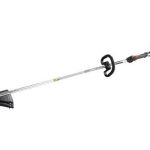In honor of today being the Fourth of July, today we look at some of the most important lawns and gardens throughout the course of American history.
Lawns in the Colonies
In the early colonies, lawns were a mix of wild grasses and gardens. Colonists were a bit too busy to spend time maintaining a nice, green expanse on their property. They did, however, maintain a village green and numerous parks in towns and cities, a civic center of sorts that was well-kept, with grass, picnic tables, benches, fountains, and more. This was maintained by the town as a whole, and not the individual land owner.
Early America
With the invention of the lawnmower in the early 19th century, soon after the American Revolution, the individual home owner now had the ability to maintain their lawns a bit easier. Unfortunately, those lawnmowers were quite expensive, and only available to the wealthiest folks. Sheep and goats were the most common maintainers, but this generation still looked more towards keeping the rougher, wilder lawns.
Civil War Era
With the development of photography as a means of communication, the well-groomed lawns of Europe began to appear in magazines, newspapers, and other visual media in America. This spread encouraged Americans, particularly the wealthy, to emulate their European brethren. Towards the end of the century, the lawnmower began to be produced in large numbers, and sold at lower prices, meaning that even the less affluent folks could afford to maintain a well-kept lawn. The end of the century also brought about research into turfgrass, with scientists developing breeds and laying the groundwork for the lawn research that has been done in the 20th century.
Courtesy: Robert Bell via Flickr.
Victory Gardens and Post-War Lawns
In the 20th century, the lawn and garden became part of every home. Victory Gardens were planted during the first World War, and maintained through to the end of the second World War. These gardens helped to augment rations and were kept in many communities. They were planted in or along side of existing lawns, sometimes on publicly-owned lands. It was a way that all parts of the family could get involved in the war efforts.
What turned lawns into what we see today was the design and growth of the suburbs, specifically the Levittown subdivisions that cropped up along the east coast. These suburbs came with cookie-cutter lawns of green grass, that everyone was expected to maintain. Coupled with assembly-line production of gas-powered lawn mowers and chemical developments that enabled greener lawns, all home owners were able to maintain their own lawns near the level of professional landscapers. Homeowners became obsessive over their lawns, and the industry responded, developing all sorts of new tools and chemicals to make life in the lawn and garden easier.
The New Millenia
New methods of power, robotic mowers, and the revival of natural plants over imported green grass have all changed the lay of the land. Lawn and garden keepers or the new millenia are looking more towards ethical and ecologically sound methods of keeping their lawn in good shape. It is a combination of moving forward while looking backwards for inspiration.
So where will the future take us with our lawns and gardens? It seems that, given the path we are currently on, we will continue to see technology grow while moving more towards the natural groundskeeping of the early lawn keepers.






